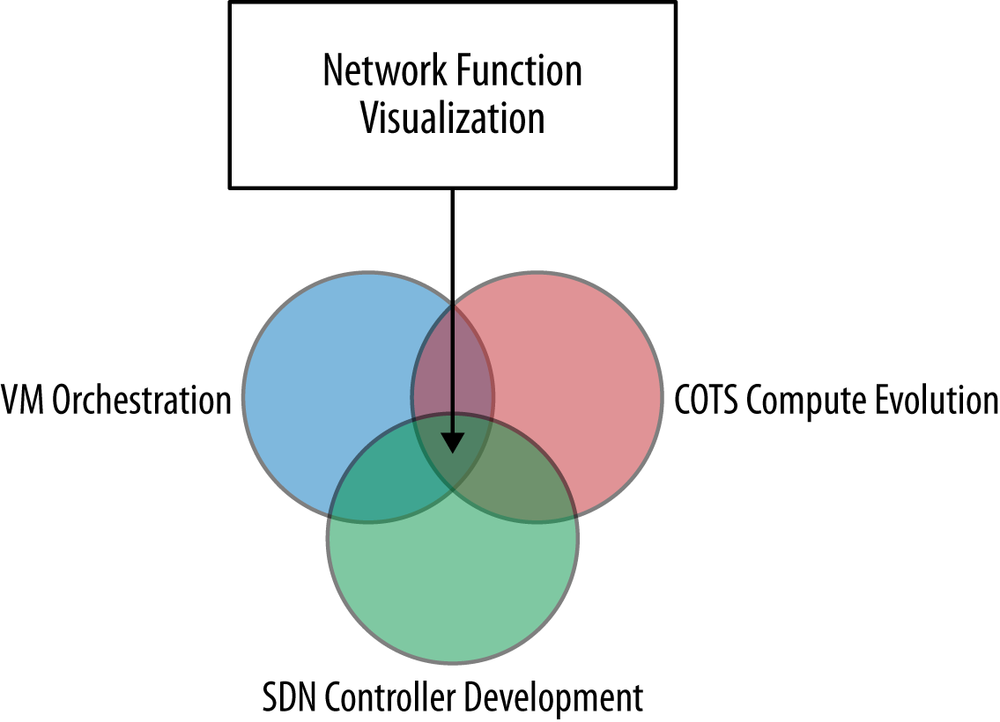Chapter 7. Network Function Virtualization
Introduction
Network Function Virtualization (NFV) builds on some of the key SDN topics introduced in prior chapters, including control/data plane separation, virtualization, SDN controllers, and data center concepts (particularly orchestration applications). Figure 7-1 illustrates the intersection of these topics.

Network Function Virtualization has its roots in several previously described network operations problems, particularly the implications of bundling services by network equipment manufacturers within their platform OS. NFV also applies to appliance vendors in a way that does not take advantage of the processing scale/innovation seen by many customers in their data centers.
Many large service providers had their own cloud offerings and thus an assumption of virtual machine orchestration in their operation. They were also tracking the I/O innovations by Intel in this space (VT-d, DDIO, DPDK, and SR-IOV support). These providers formally declared their desire for service virtualization and sponsorship of standards development around service virtualization through a paper published at a Layer123 SDN Conference (Darmstaad, Germany) in the fall of 2012.[137] This work ultimately ended up being sponsored within ETSI.[138] In addition to this paper, providers ...
Get SDN: Software Defined Networks now with the O’Reilly learning platform.
O’Reilly members experience books, live events, courses curated by job role, and more from O’Reilly and nearly 200 top publishers.

